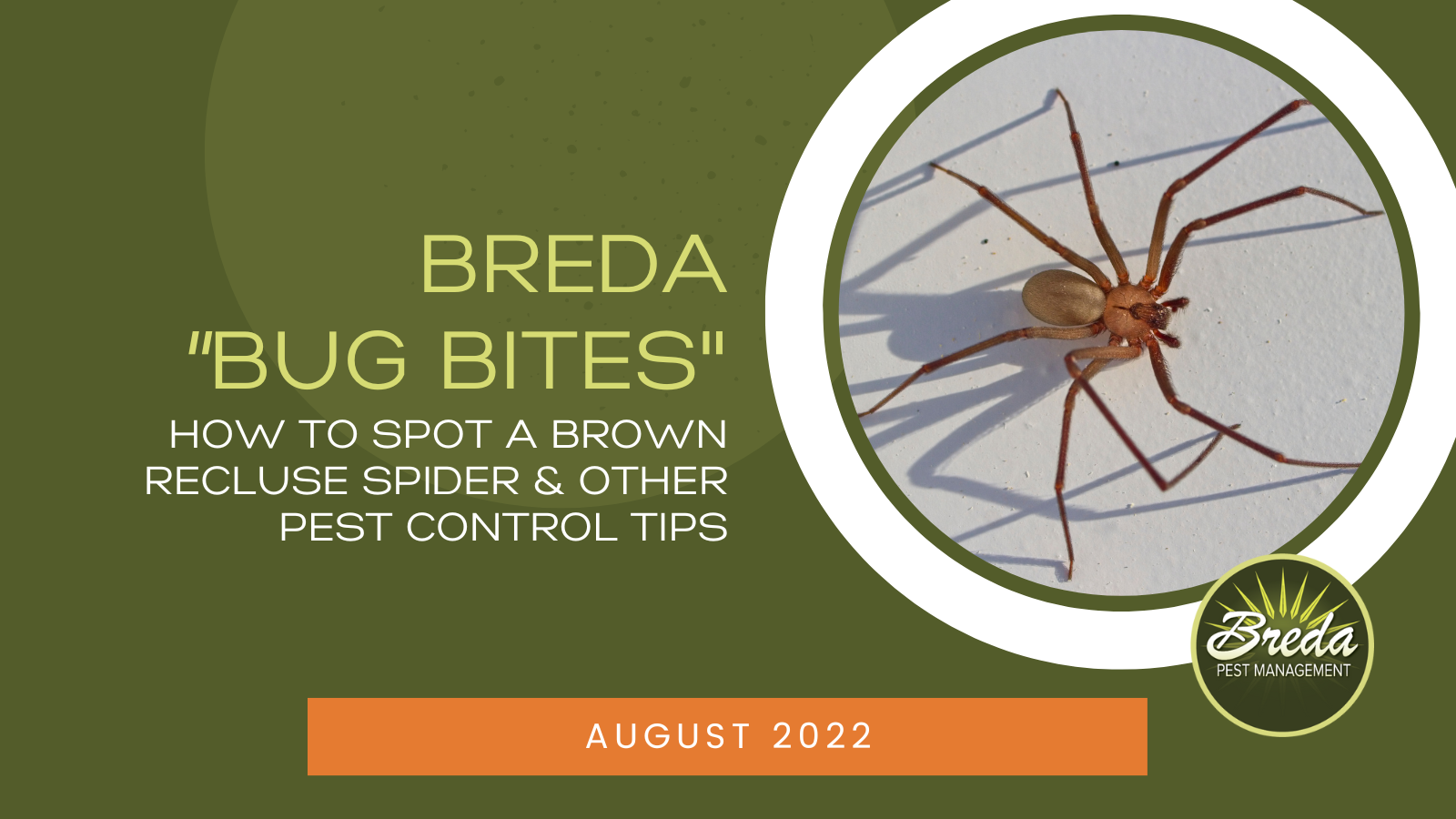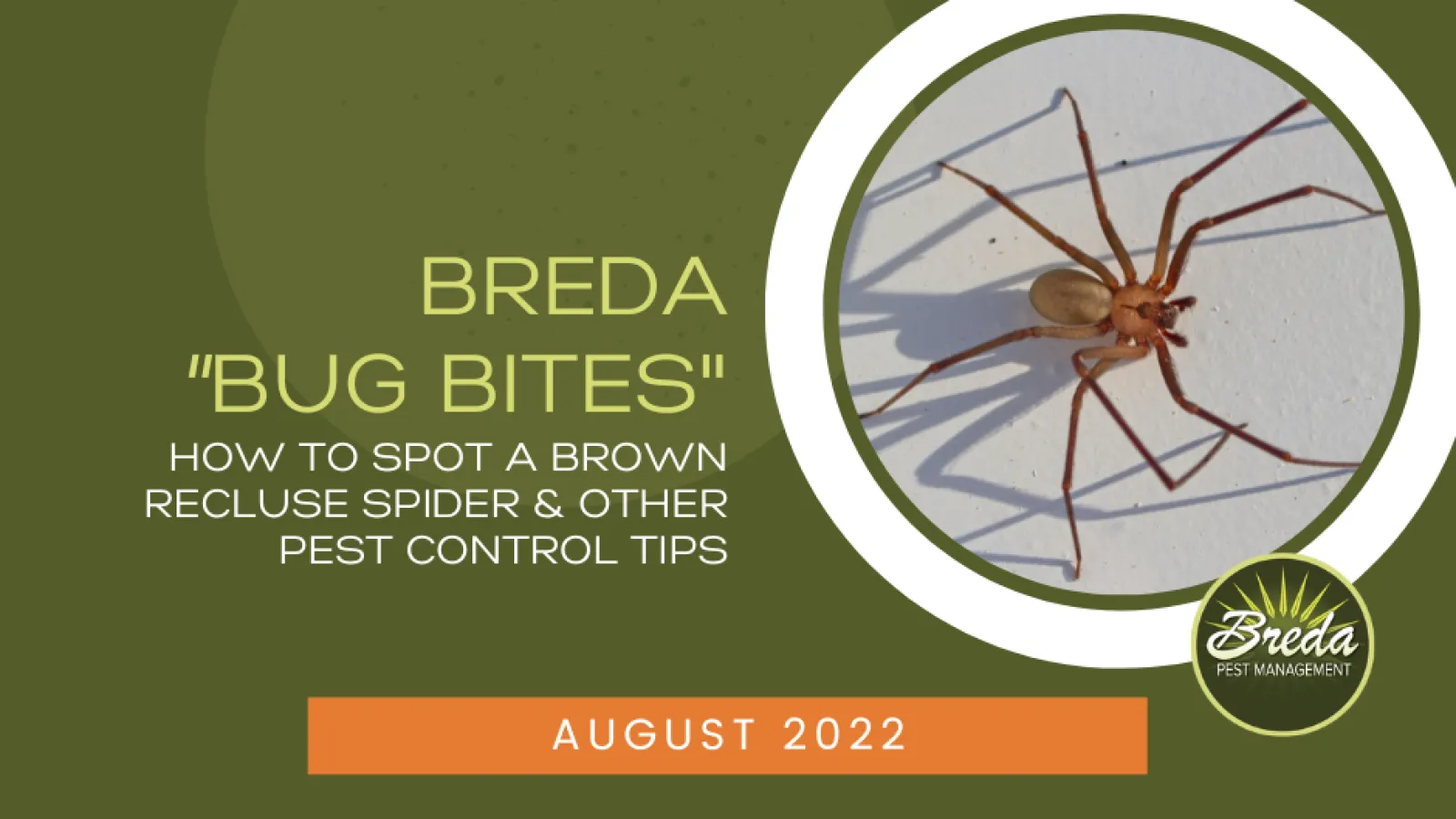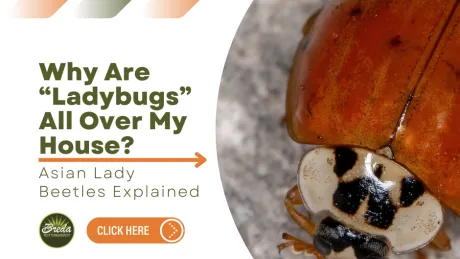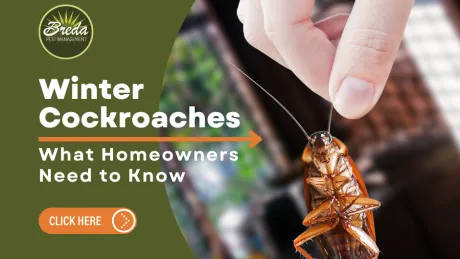
Wouldn't it be nice if getting rid of bugs and critters was a quick, universal fix? It would certainly make our job easier! But the reality is that if you want your home to be pest-free, you're going to have to get on the level of your opponent and figure out how to tip the scales in your favor. You know that you have the BREDA team in your corner ready to help you out, but we always like to share knowledge with Georgia homeowners that will help you feel more confident about keeping any unwanted guests out of your home. (Sorry, this advice only applies to unwanted PEST guests!)
Do you know how to tell the difference between a brown recluse spider and a house spider?
You really start to wonder exactly what nature is trying to pull when it produces insects that look very similar but are an actual guessing game of "am I going to kill you or not?" Brown recluse spiders and house spiders are two contestants in that game! To help you come out a winner in the spider identification game, we have some quick checks you can use to tell the difference between a brown recluse and a house spider.
Does the spider have a violin-shaped marking on its thoracic region? If yes, it's likely a brown recluse.
Are you finding spider webs in crevices or tight areas around your house? If yes, you're likely dealing with a house spider.
Does the spider only have six eyes? If yes, it's a brown recluse.
If you're still not sure (or just don't want to get close to that thing, good or bad), a member of the BREDA team will happily come out to your home to help you. It's always better to be safe than sorry!
Did you know that mice hate the smell of peppermint?
Think you have a mouse (or mice) running around your house? With the heat and occasional lack of rain in Georgia, it's understandable that all the critters living outside will want nothing more than to come inside to your air conditioning and bountiful buffet of food. Mouse repellent comes in many forms and applications, but it is a chemical and when it comes to the inside of your home, it's best to find a natural remedy before resorting to the more loaded options. Peppermint—the plant AND the smell—is something that mice cannot stand. If you think that you have mice in your house, spray peppermint essential oil around your home, specifically in places where you think mice stand a chance of getting in. You can also plant peppermint plants outside your home in containers near doors and windows. Not only will it provide a refreshing aroma outside on a breezy day, it will also help direct mice and their extra-sensitive noses away from your house!
Did you know that it's harmful to use bait traps to get rid of ants in your car?
When you spot ants in your car, it's a perfectly good time to panicâ¦but know that getting ants out of your car can be a relatively painless process. It might be tempting and incredibly convenient to grab a bunch of ant bait traps and stick them all over your car, but you might actually make the problem worse. Those traps may actually bring more ants into your car because of their sweetness. Ant bait traps placed outside your car will help draw those little guys out. Make sure you've removed any trash and dropped food from your car and invest in a thorough vacuuming and carpet/upholstery cleaning (if necessary). If you're still finding ants in your car after cleaning and bait trapping, give us a call!
Did you know there are only six poisonous snakes in Georgia?
Yes, we're saying "only six" because when compared to the total number of snake species living in the state of Georgia, six is a relatively small number. (You can read through the entire list of snake species in Georgia here.) Snakes are actually an MVP of the ecosystem, so it's not only helpful to you but also beneficial to the outdoors for you to know friend and foe in the snake world.
We found a great list of things to look for when trying to determine if a snake is poisonous or not. Here is a brief recap—be sure to read the whole article here:
Look at the shape of the pupils: Elliptical pupils = venomous, round pupils = non-venomous
Listen for a sound, especially a rattle, and leave the area if you hear anything
Check the shape of the snake's head: Venomous snakes have a more bulging head (because of their venom sacks) while non-venomous snakes have slim heads.
Pay attention to the color of the snake: Venomous snakes are more colorful and have more patterns, while non-venomous snakes are typically single colors.
If you find yourself needing pest control and want it handled thoroughly, don't hesitate to give us a call. The BREDA Guarantee promises to fix your pest problem and keep it fixed—no matter the circumstances. Schedule a consultation online or give us a call at 770-466-6700.



